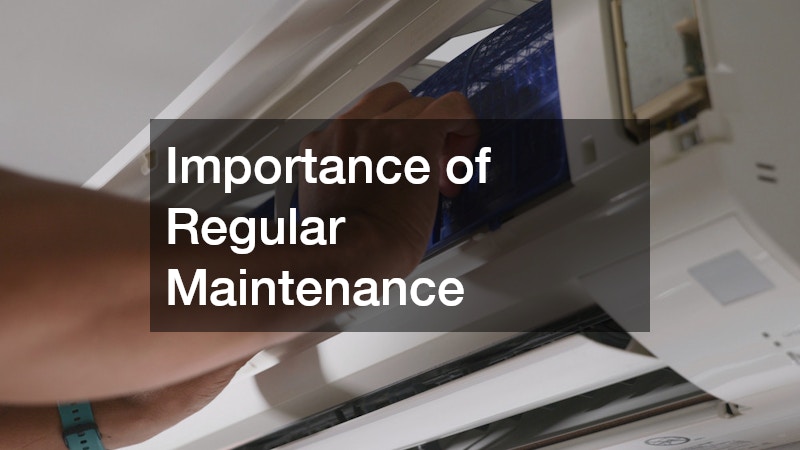Maintaining a comfortable home environment is crucial, particularly during the sweltering summer months. Understanding the basics of AC repairs empowers homeowners to keep their cooling systems in top condition. This knowledge not only saves time and money, but also ensures the consistent comfort of one’s home.
Recognizing Signs of AC Malfunction
Recognizing the early signs of AC malfunction can prevent more serious damage. Unusual noises, such as grinding or squealing, often indicate a mechanical problem. Additionally, if your AC isn’t cooling adequately, it might be struggling with performance issues.
Leaks around the unit can be a cause for concern, usually signaling a problem with the refrigerant system. Water accumulation can also lead to mold growth, further affecting air quality. Paying attention to these signs at an early stage can prevent bigger issues down the road.
A sudden spike in your electricity bill can be another indicator that your AC isn’t functioning efficiently. An overworked system tends to consume more energy, which is often reflected in your monthly utility costs. Therefore, identifying these issues early can save on long-term expenses.
Understanding Different Types of AC Issues
Different AC problems require different solutions, and familiarity with these issues can help in diagnosing the problem accurately. Refrigerant leaks, for example, not only affect cooling but are also harmful to the environment. Frozen coils are another common issue, often indicating airflow problems or refrigerant leaks.
Electrical issues within the system pose serious hazards and require immediate attention. A failed capacitor or damaged wiring can lead to sudden halts in operation. Understanding the nature of these issues can help in deciding the appropriate course of action.
Additionally, dirty filters and coils can impede airflow and reduce system efficiency. Regular cleaning is necessary to maintain optimal performance. Overall, knowledge of these problems prepares homeowners for effective AC maintenance.
Tools and Techniques for Diagnosing Issues
Equipping oneself with basic tools can significantly aid in diagnosing AC issues. A digital thermostat can help determine if the problem originates from the AC unit or elsewhere. Multimeters are handy for checking electrical connections and ensuring safety.
An infrared thermometer can be used to detect inaccurate temperature readings within the system. Keeping a small tool kit with screwdrivers and pliers is beneficial for simple mechanical checks. Knowing which tools to use and how empowers homeowners to handle minor issues independently.
Importance of Regular Maintenance
Regular AC maintenance is pivotal for extending the life of the system and ensuring efficiency. Routine check-ups can prevent wear and tear by identifying potential problems before they escalate. Proactive maintenance can reduce the risk of unexpected breakdowns, promoting reliability.
A well-maintained AC unit operates more efficiently, ultimately saving on energy costs. Regular inspections contribute to sustained performance and cooling efficacy. Homeowners benefit from both the immediate comfort and the long-term cost savings that come from regular upkeep.
Ignoring regular maintenance can lead to compounded issues and higher repair bills. An investment of time in maintenance tasks pays off with improved air quality and system longevity. Therefore, routine maintenance should take precedence in a homeowner’s schedule.
Step-by-Step Guide to Cleaning Filters and Coils
Cleaning AC filters and coils is essential for maintaining optimal airflow and cooling efficiency. Start by turning off the power to the unit to ensure safety. Remove the filters and either wash them with mild detergent or replace them if they are beyond cleaning.
Access the evaporator coils, usually protected by an access panel, and gently clean them using a coil cleaner. This removes dust and debris that accumulate over time, hindering cooling performance. Allow the coils to dry completely before reassembling the unit.
Regular filter and coil cleaning should be performed according to the manufacturer’s recommendations. This simple maintenance task can significantly improve the overall efficiency of the AC system. Consistency in cleaning will ensure clean air circulation and peak operational performance.
Lubrication and Belt Maintenance Tips
Lubricating motor parts is crucial to minimizing friction and reducing wear over time. Apply a few drops of oil to the motor bearings to ensure smooth movement. This not only promotes longevity but also reduces noise generated by moving parts.
Checking belt tension and condition is also an important maintenance task. Belts that are too loose can lead to slipping, while overly tight belts can cause premature wear on both the belt and the motor. Ensuring the belt is in good condition and correctly tensioned will prevent further issues.
Identifying Complex Issues
While some repairs can be handled at home, certain complex issues necessitate professional intervention. Refrigerant leaks are a prime example of problems that require a trained technician due to their environmental impact and handling requirements. Electrical problems, like faulty wiring, pose significant safety hazards.
An HVAC professional is equipped with the technical knowledge and tools necessary for resolving intricate issues. Attempting to fix these problems without proper training can lead to further damage or safety risks. Understanding the limitations of DIY repair is crucial for avoiding costly mistakes.
In summary, a foundational understanding of AC repair empowers homeowners to maintain efficient and comfortable home environments. Identifying common issues, performing basic maintenance, and understanding when to call in professionals are key components of effective AC management. By taking proactive steps, homeowners can ensure the longevity and performance of their cooling systems, ultimately saving on costly repairs and energy expenses.


